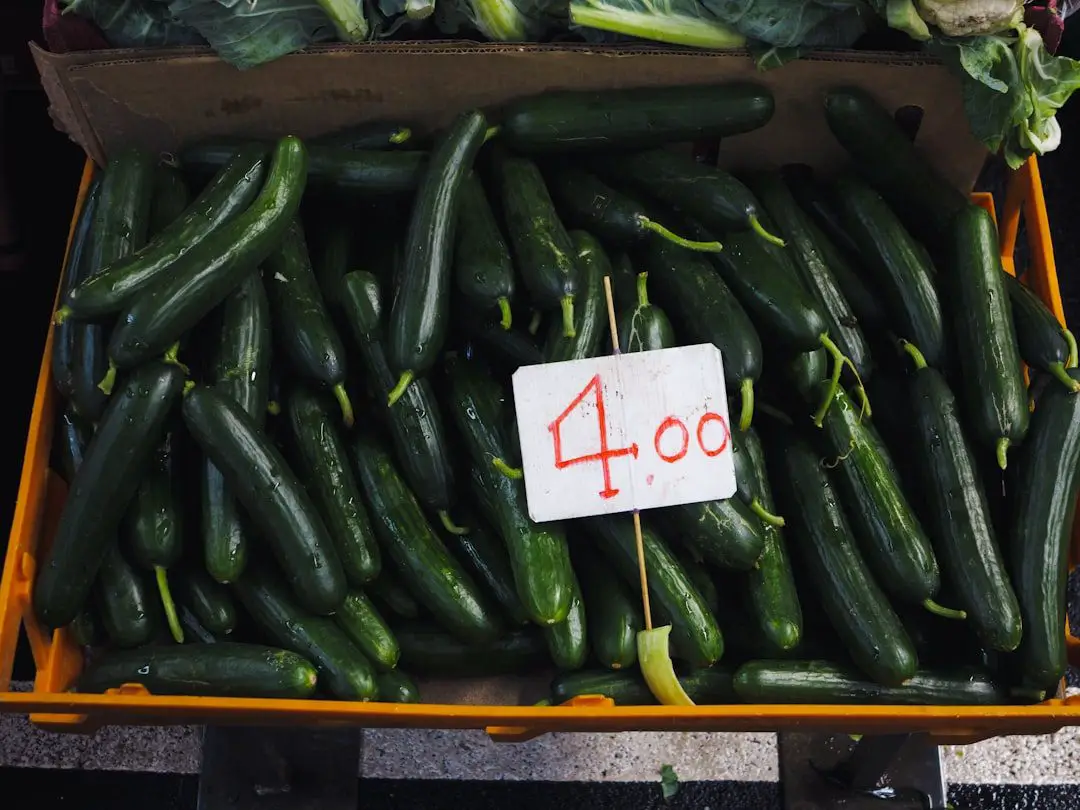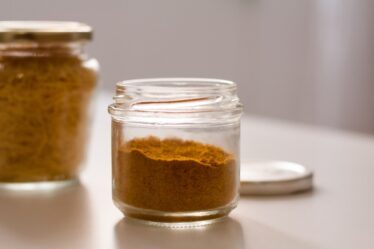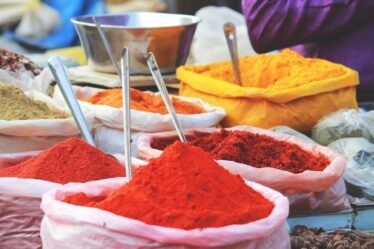
Pickling is a time-honored tradition that dates back thousands of years. It is a method of food preservation that involves immersing fruits or vegetables in a brine or vinegar solution, which helps to extend their shelf life and enhance their flavor. The process of pickling not only preserves the food but also creates a unique taste that is both tangy and savory.
The history of pickling can be traced back to ancient civilizations such as Mesopotamia and Egypt, where people discovered that soaking food in a mixture of salt and water helped to preserve it for longer periods of time. Over the centuries, pickling techniques spread to different parts of the world, with each culture adding its own unique twist to the process.
The pickling process involves several steps. First, the fruits or vegetables are thoroughly washed and prepared. They are then placed in jars or containers and covered with a brine or vinegar solution. The jars are sealed and left to sit for a period of time, allowing the flavors to develop and the food to pickle. The length of time required for pickling varies depending on the recipe and personal preference.
Pickling has remained a popular food preservation method for several reasons. Firstly, it allows people to enjoy seasonal produce all year round. By pickling fruits and vegetables when they are in abundance, they can be enjoyed during times when they are out of season. Secondly, pickling enhances the flavor of the food. The brine or vinegar solution infuses the fruits or vegetables with a tangy and savory taste that is both refreshing and satisfying. Lastly, pickled foods are versatile and can be used in a variety of dishes. They can be enjoyed on their own as a snack, added to salads or sandwiches, or used as a condiment to enhance the flavor of other dishes.
Key Takeaways
- Pickling is an ancient art that has been used for centuries to preserve food.
- Choosing the right cucumbers is crucial for making delicious pickles.
- Creating the perfect brine involves a step-by-step process that requires careful attention to detail.
- Adding herbs and spices can enhance the flavor of your pickles and make them more interesting.
- Fermenting pickles can provide numerous health benefits and improve their taste.
The Importance of Choosing the Right Cucumbers
When it comes to pickling, not all cucumbers are created equal. Choosing the right cucumbers is crucial to achieving the perfect pickles. There are several different types of cucumbers that are suitable for pickling, each with its own unique characteristics.
One of the most popular types of cucumbers for pickling is the Kirby cucumber. Kirby cucumbers are small and firm, with a bumpy skin that helps to hold the brine and maintain their crunchiness. They are known for their excellent flavor and are often used in traditional dill pickle recipes.
Another type of cucumber that is commonly used for pickling is the Persian cucumber. Persian cucumbers are smaller and sweeter than Kirby cucumbers, making them a great choice for those who prefer a milder flavor. They have a thin skin that does not need to be peeled, making them quick and easy to prepare.
When choosing cucumbers for pickling, there are several factors to consider. Firstly, look for cucumbers that are firm and free from blemishes or soft spots. Avoid cucumbers that are overripe or have yellowed skin, as they may not pickle well. Secondly, consider the size of the cucumbers. Smaller cucumbers tend to be crisper and more flavorful than larger ones. Lastly, choose cucumbers with a thin skin that does not need to be peeled, as this will save you time and effort during the preparation process.
To prepare cucumbers for pickling, start by washing them thoroughly under cold water to remove any dirt or debris. Trim off the ends of the cucumbers and slice them into your desired shape and size. Some people prefer to leave their cucumbers whole, while others like to slice them into rounds or spears. The choice is up to you and depends on your personal preference.
Creating the Perfect Brine: A Step-by-Step Guide
The brine is a crucial component of the pickling process. It is what gives pickles their tangy and savory flavor and helps to preserve them for longer periods of time. Creating the perfect brine involves a few simple steps.
To make a basic brine, you will need the following ingredients:
– Water: The base of the brine.
– Vinegar: Adds acidity and tanginess to the pickles. White vinegar or apple cider vinegar are commonly used.
– Salt: Helps to preserve the pickles and enhance their flavor. Kosher salt or pickling salt are recommended.
– Sugar: Balances out the acidity of the vinegar and adds a touch of sweetness. Optional, but can be used to adjust the flavor to your liking.
To make the brine, start by combining equal parts water and vinegar in a large pot or saucepan. For example, if you are using 2 cups of water, you would use 2 cups of vinegar. Add salt to the mixture, using about 1 tablespoon per cup of liquid. If desired, add sugar to taste, using about 1 tablespoon per cup of liquid.
Heat the mixture over medium heat until it comes to a boil. Stir occasionally to dissolve the salt and sugar. Once the mixture has come to a boil, remove it from the heat and let it cool completely before using.
It is important to note that the ratio of water to vinegar can be adjusted according to personal preference. Some people prefer a more tangy flavor and use a higher ratio of vinegar to water, while others prefer a milder flavor and use a higher ratio of water to vinegar. Experiment with different ratios until you find the perfect balance for your taste.
Adding Flavor with Herbs and Spices
| Herb/Spice | Flavor Profile | Health Benefits | Common Dishes |
|---|---|---|---|
| Basil | Sweet, slightly peppery | Anti-inflammatory, antioxidant | Caprese salad, pesto pasta |
| Cumin | Earthy, nutty | Improves digestion, anti-inflammatory | Chili, tacos, curry |
| Dill | Fresh, slightly sweet | Anti-inflammatory, antioxidant | Pickles, salmon, potato salad |
| Ginger | Spicy, slightly sweet | Anti-inflammatory, aids digestion | Stir-fry, tea, baked goods |
| Oregano | Earthy, slightly bitter | Antibacterial, anti-inflammatory | Pizza, pasta sauce, roasted vegetables |
| Paprika | Sweet, smoky | Antioxidant, anti-inflammatory | Goulash, deviled eggs, roasted chicken |
| Rosemary | Woody, piney | Improves memory, anti-inflammatory | Roasted potatoes, grilled meats, bread |
| Thyme | Earthy, slightly minty | Antibacterial, anti-inflammatory | Roasted chicken, tomato soup, stuffing |
One of the joys of pickling is the ability to experiment with different flavors and create unique combinations that suit your taste. Herbs and spices are a great way to add depth and complexity to your pickles.
There are several popular herbs and spices that are commonly used in pickling. Dill is perhaps the most well-known herb for pickling, especially in dill pickle recipes. Dill adds a fresh and slightly tangy flavor to the pickles, complementing the brine perfectly. Other herbs that work well in pickling include thyme, rosemary, and bay leaves.
When it comes to spices, there are endless possibilities. Mustard seeds are a classic choice, adding a subtle heat and nuttiness to the pickles. Black peppercorns are another popular option, adding a hint of spiciness. Other spices that can be used include coriander seeds, fennel seeds, and cloves.
To use herbs and spices in pickling, simply add them to the brine before pouring it over the cucumbers. You can experiment with different combinations to create unique flavors. For example, you could try adding dill and mustard seeds for a classic dill pickle flavor, or thyme and black peppercorns for a more herbaceous and spicy taste.
When using herbs and spices in pickling, it is important to balance the flavors. Start with small amounts and adjust to taste. Remember that the flavors will intensify over time as the pickles sit in the brine, so be mindful not to overpower the cucumbers with too much seasoning.
The Benefits of Fermenting Pickles
Fermenting pickles is a traditional method of pickling that has been used for centuries. It involves allowing the cucumbers to sit in a brine solution for an extended period of time, allowing natural bacteria to convert sugars into lactic acid. This process not only preserves the cucumbers but also creates a unique flavor profile that is both tangy and slightly sour.
There are several health benefits associated with fermented pickles. Firstly, they are rich in probiotics, which are beneficial bacteria that promote a healthy gut. Probiotics have been shown to improve digestion, boost the immune system, and reduce inflammation. Consuming fermented pickles regularly can help to improve overall gut health and promote a healthy digestive system.
Fermented pickles are also a good source of vitamins and minerals. During the fermentation process, the cucumbers undergo a transformation that increases their nutrient content. They become more bioavailable, meaning that the body can absorb and utilize the nutrients more effectively. Fermented pickles are particularly high in vitamin K, which is important for bone health, and vitamin C, which is an antioxidant that helps to boost the immune system.
To ferment pickles, start by preparing the cucumbers as you would for regular pickling. Place them in a jar or container and cover them with a brine solution. The brine should be made using a higher ratio of salt to water compared to regular pickling brine. This helps to create an environment that is conducive to fermentation.
Once the cucumbers are submerged in the brine, cover the jar loosely with a lid or cloth to allow air to circulate. Place the jar in a cool and dark place, such as a pantry or cellar, and let it sit for several days or weeks, depending on your preference. The longer the cucumbers ferment, the tangier and more sour they will become.
It is important to note that during the fermentation process, natural gases are released. This can cause pressure to build up inside the jar, so it is important to “burp” the jar regularly by opening it slightly to release any excess gas. This will prevent the jar from exploding and ensure that the fermentation process proceeds smoothly.
Tips for Achieving the Perfect Crunch

One of the hallmarks of a good pickle is its crunchiness. Achieving the perfect crunch can be a bit tricky, as there are several factors that can affect the texture of the pickles. However, with a few tips and tricks, you can ensure that your pickles turn out crisp and crunchy every time.
One of the most important factors that affect pickle crunchiness is the freshness of the cucumbers. It is best to use cucumbers that are as fresh as possible, preferably ones that have been picked within 24 hours. Fresh cucumbers have a higher water content, which helps to maintain their crispness during the pickling process.
Another factor that affects pickle crunchiness is the type of cucumber used. As mentioned earlier, Kirby cucumbers are known for their excellent crunchiness and are often used in traditional dill pickle recipes. Persian cucumbers are also a good choice, as they have a thin skin and a high water content, which contributes to their crispness.
The length of time that the cucumbers sit in the brine also affects their crunchiness. If you prefer a crunchier pickle, it is best to let them sit in the brine for a shorter period of time. The longer the cucumbers sit in the brine, the softer they will become. Keep in mind that the pickles will continue to soften slightly as they age, so it is best to err on the side of under-pickling if you prefer a crunchier texture.
To achieve the perfect crunch, it is also important to avoid common mistakes. One common mistake is using too much salt in the brine. While salt is necessary for preserving the pickles and enhancing their flavor, using too much can cause them to become overly soft. Be sure to follow the recommended salt-to-water ratio and adjust to taste.
Another common mistake is not removing the blossom end of the cucumbers. The blossom end contains enzymes that can cause the pickles to become soft. To prevent this, simply trim off the blossom end before pickling.
Troubleshooting Common Pickling Problems
While pickling is a relatively simple process, it is not without its challenges. There are several common problems that can arise during the pickling process, but with a little troubleshooting, they can be easily fixed.
One common problem in pickling is mold growth. Mold can develop on the surface of the brine or on the cucumbers themselves, and can be caused by several factors, including improper sterilization of jars or containers, using contaminated ingredients, or not using enough salt in the brine.
To prevent mold growth, it is important to properly sterilize your jars or containers before use. This can be done by washing them in hot soapy water and then rinsing them thoroughly. Alternatively, you can run them through a dishwasher cycle on the hottest setting. It is also important to use fresh and clean ingredients and to follow proper hygiene practices during the pickling process.
If mold does develop, it is best to discard the entire batch of pickles to avoid any potential health risks. Mold can produce toxins that are harmful if ingested. To prevent future mold growth, be sure to thoroughly clean and sterilize your jars or containers before using them again.
Another common problem in pickling is soft or mushy pickles. This can be caused by several factors, including using overripe cucumbers, not removing the blossom end of the cucumbers, or not using enough salt in the brine.
To prevent soft or mushy pickles, it is important to choose cucumbers that are firm and free from blemishes or soft spots. Avoid cucumbers that are overripe or have yellowed skin. It is also important to remove the blossom end of the cucumbers before pickling, as it contains enzymes that can cause the pickles to become soft. Lastly, be sure to follow the recommended salt-to-water ratio and adjust to taste.
Creative Uses for Pickle Brine
When you finish pickling your cucumbers, you may find yourself with leftover brine. Instead of throwing it away, consider using it in other creative ways. Pickle brine is a versatile ingredient that can add a tangy and savory flavor to a variety of dishes.
One simple way to use pickle brine is as a marinade for meats or vegetables. The acidity of the brine helps to tenderize the meat and infuse it with flavor. Simply marinate your desired protein or vegetables in the brine for several hours or overnight before cooking.
Pickle brine can also be used as a salad dressing or vinaigrette. The tangy flavor of the brine pairs well with fresh greens and vegetables. Simply combine the brine with olive oil, herbs, and spices to create a flavorful dressing.
Another creative use for pickle brine is in cocktails. The tangy and savory flavor of the brine adds a unique twist to classic cocktails such as Bloody Marys or martinis. You can also use pickle brine to make a pickleback shot, which involves taking a shot of whiskey followed by a shot of pickle brine.
If you have a sweet tooth, you can even use pickle brine in baking. The acidity of the brine can help to balance out the sweetness in baked goods such as cakes, cookies, and muffins. Adding a small amount of pickle brine to the batter or dough can enhance the flavors and create a unique taste. It can also add a subtle tanginess that complements the sweetness, making the baked goods more interesting and flavorful. However, it is important to use pickle brine sparingly as it can easily overpower the other flavors in the recipe. Experimenting with different amounts and combinations can help achieve the desired balance of sweet and tangy flavors in your baked treats.
If you’re a fan of homemade pickles, you’ll love this article on Flavorful Sips that explores the intricacies of making pickles from scratch. From choosing the right cucumbers to mastering the perfect brine, this step-by-step guide will have you pickling like a pro in no time. And if you’re looking for more delicious recipes, be sure to check out their other articles on topics like savoring the health and taste in every sip with licuados and mastering the art of sweet and sour cabbage soup. Happy pickling! Read more



